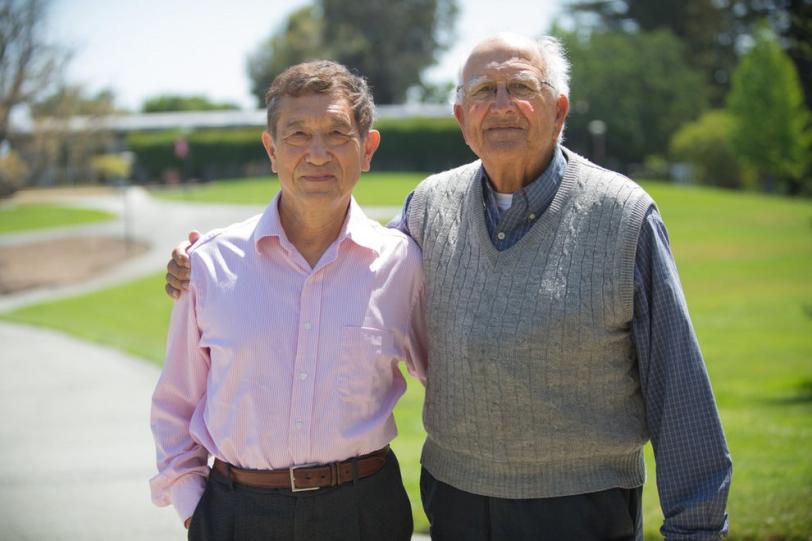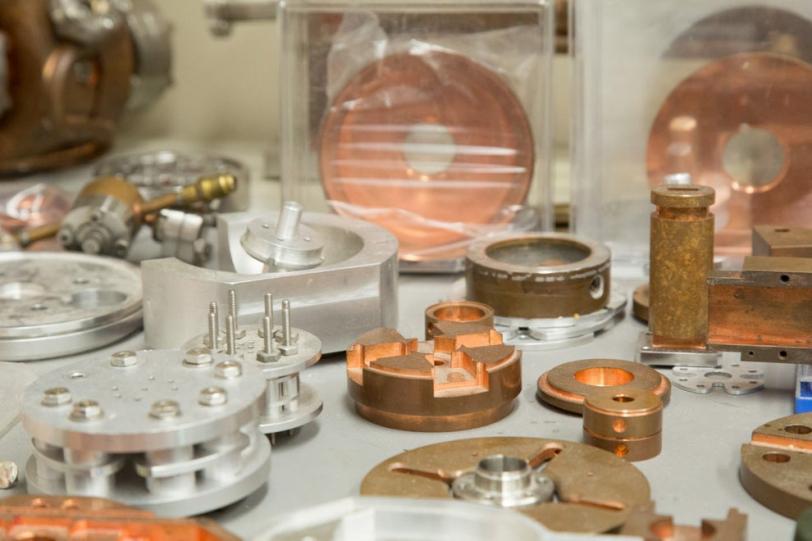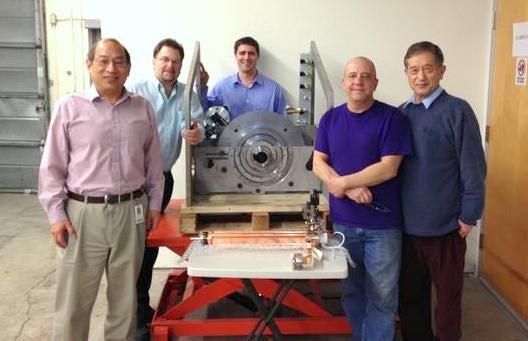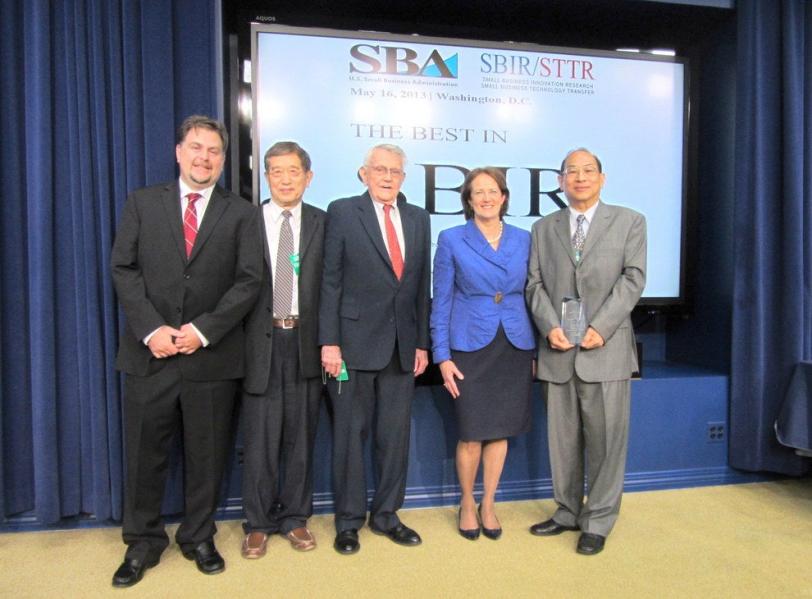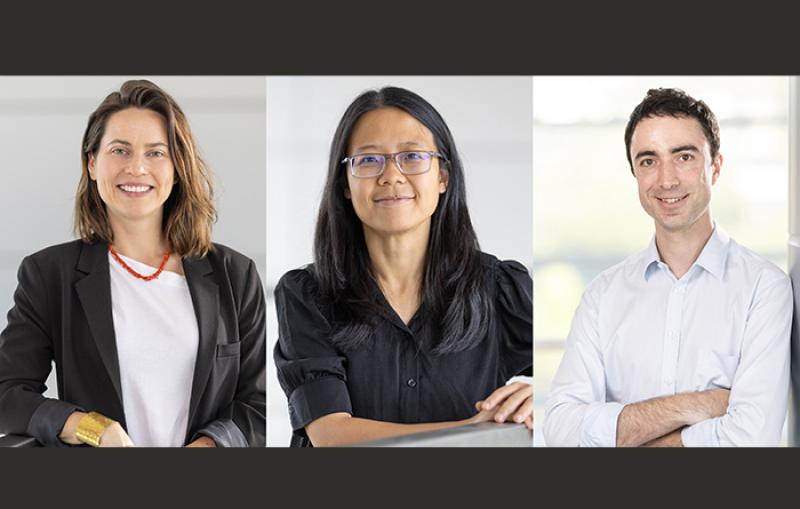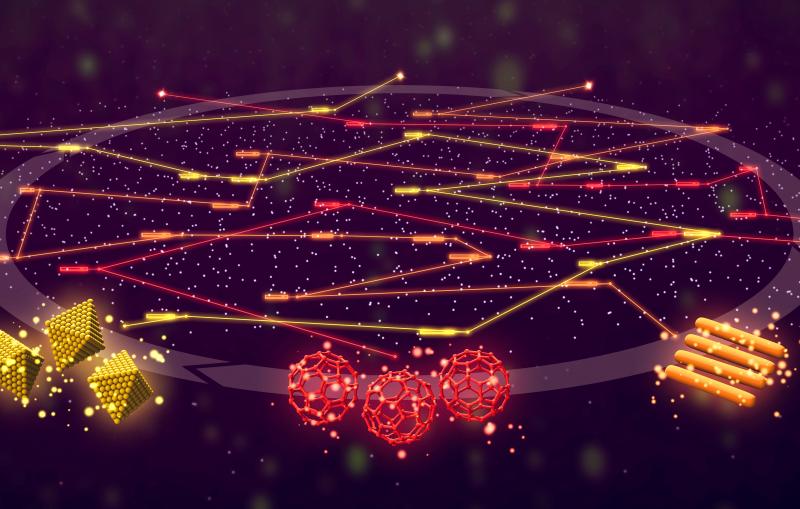SLAC Physicists Help Design, Build Cargo X-ray Scanners
Two SLAC physicists with decades of particle accelerator experience helped a Silicon Valley company design and build X-ray devices that scan cargo containers for nuclear materials and other hazards.
By Glenn Roberts Jr.
Two SLAC physicists with decades of particle accelerator experience helped a Silicon Valley company design and build X-ray devices that scan cargo containers for nuclear materials and other hazards. A version of this screening system is now in commercial use, and on May 16, the company received national recognition for its successful development from the federal Small Business Administration.
Sunnyvale-based Accuray Inc. has engaged longtime SLAC accelerator physicists Juwen Wang and Roger Miller as consultants for more than eight years. They first assisted the company with accelerators for medical applications, contributing time and expertise outside of their regular duties at SLAC. Miller retired from SLAC in 2006 and is no longer actively consulting at Accuray, while Wang continues to consult with the company. SLAC is not involved in this research.
Accuray's X-ray cargo scanner project was honored with a Tibbetts Award, given by the Small Business Administration to companies successfully undertaking projects funded by the Small Business Innovation Research (SBIR) program and to individuals who make significant contributions to the program. The SBIR program encourages small businesses to do research and development with the potential to produce commercial products.
While Accuray specializes in building accelerator systems for medical uses, company officials decided in 2006 to pursue an opportunity to design and build a cargo-scanning system, said Stephen Cheung, principal investigator of cargo security projects, who joined Accuray in 2007 as director of microwave systems.
A major contractor specializing in security asked the company to build two X-ray generators, driven by small linear accelerators, for use in a "Cargo Advanced Automated Radiography System," or CAARS. The system can identify possible threats such as radioactive materials. This required an accelerator design that was different from others available in the market. Cheung said Wang and Miller were instrumental in finding the right design for the system.
The linear accelerator used in the scanning system is a miniaturized and modified version of the half-century-old, 2-mile-long linear accelerator that is still in use at SLAC, noted Wang and Miller, with components that are several times smaller than those of SLAC's linac.
Cheung said, "In this case, we were open to using a different approach and it took scientists like Juwen and Roger to help find the right starting point because their breadth of knowledge is so broad. I can't say they had to think outside the box because their box was very big. They've done more, seen more, and probably analyzed more" accelerator systems and designs because of the nature of their wide-ranging accelerator research, he said.
Both Wang and Miller are fellows of the American Physical Society, and they collectively have about 100 years of experience working on accelerators. Miller's work in accelerator physics began in 1956, and he spent more than 45 years at SLAC. Wang has about 40 years of experience in accelerator physics and came to SLAC in 1980. A May 19 symposium at Tsinghua University in China will celebrate his 70th birthday and recognize his scientific career.
"We really appreciate (Wang and Miller) on our team – not just on the theory side and design side, but also their practical knowledge. They are world-class experts," Cheung said.
Miller said he worked mostly on conceptual designs for the CAARS system, and that Wang "got his hands dirty" tuning and assembling the device, among other things.
"It was a great experience working with the Accuray team throughout the project," Wang said. "I am very happy to hear from the customer that the first linac worked so well."
One nuance of their design was to make the CAARS accelerator a "traveling wave" rather than a "standing wave" linac. Wang "was really insistent over making a traveling-wave" system, Miller said. At first this seemed like a fairly trivial difference, he said, but "as soon as we began working on the project we realized it would be vastly better in performance over a wide range of energies."
Accuray delivered the first of two systems in late 2008. The systems were compact and capable of "interleaving," or compiling two X-ray beams of different energy into a single output beam, producing hundreds of pulses per second. The devices worked extremely well at the customer site, Cheung said.
In 2009, Accuray responded to a related SBIR solicitation from the U.S. Department of Homeland Security, which called for a next-generation X-ray system for cargo security and specified a new set of technical goals. Accuray's proposal, which called for the same traveling-wave design and new instrumentation, was approved for funding in 2010, and that project – which won the national award – was completed in October 2012.
Cheung said a major company contracted with Accuray midway into the SBIR project to develop a mass- market version of its X-ray system, with many of the capabilities developed under the SBIR program.
"This product is being deployed in the field right now," he said, adding that the SBIR program placed heavy emphasis on commercialization as a measure of success.
"I think our team has learned a lot" from the knowledge that Wang and Miller have brought to the company, Cheung said. "We have grown up a bit by learning from them."
Contact
For questions or comments, contact the SLAC Office of Communications at communications@slac.stanford.edu.
